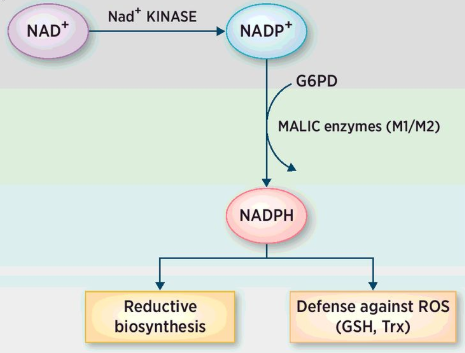Amazing: the popular science knowledge-series 1 (depression|hemolytic anemia|cancer treatment|energy transmission)
1. Be alert: habitual smoking may be a precursor to depression!
Monoamine oxidase (MAO, EC1.4.3.4) mainly exists in various organs of vertebrates, especially secretory glands, brain, and liver. It also catalyzes the metabolism of monoamines in plants such as invertebrates and bean buds. The content is low and has important physiological functions. In the human body, MAO has two forms: MAO-A and MAO-B.
Too much or too little MAO levels in the body are believed to be the cause of many mental and neurological diseases, such as schizophrenia, depression, attention deficit disorder, migraine, etc. Monoamine oxidase inhibitors are one of the main drugs for the treatment of depression. MAO-A inhibitors can be used as antidepressants and anxiolytics, while MAO-B inhibitors can be used alone or in combination to treat Alzheimer's disease and Parkinson's disease.
Positron emission tomography (PET) studies have shown that smoking consumes a lot of MAO-B, and smokers who smoke in order to relieve mood may inadvertently treat depression or anxiety.
2. When hemolytic anemia occurs, glucose-6-phosphate dehydrogenase (G6PDH) deficiency may be the cause
Glucose-6-phosphate dehydrogenase (G6PD or G6PDH) is a cytoplasmic enzyme that catalyzes chemical reactions. This enzyme participates in the pentose phosphate pathway, which is a metabolic pathway that provides reduction energy to cells (such as red blood cells) by maintaining NADPH levels. NADPH in turn maintains glutathione levels in these cells, helping to protect red blood cells from oxidative damage from compounds such as hydrogen peroxide.

Fig 1: G6PDH-related reactions in the body
When G6PD is lacking, red blood cells will be destroyed. When red blood cells are destroyed faster than the body can replace, hemolytic anemia will occur, resulting in reduced oxygen flow to organs and tissues. This can cause fatigue, yellowing of the skin and eyes, and shortness of breath. Clinically, doctors diagnose whether a patient has G6PD deficiency by detecting the level of G6PD in the blood.
Under what circumstances will hemolytic anemia caused by G6PD deficiency occur?
- Eating broad beans or certain legumes;
- The body is infected;
- Consumption of certain drugs, such as anti-malarials, sulfa drugs, aspirin, some non-steroidal anti-inflammatory drugs, etc.
3. A super attractive target for cancer treatment-NAD kinase (NADK)
NAD kinase (NADK, EC 2.7.1.23) is widely present in animals, plants, microorganisms and cultured cells. It is the only enzyme found in organisms that can catalyze the phosphorylation of NAD+ to generate NADP+. It can catalyze NAD(H) to ATP or inorganic Polyphosphoric acid [poly(P)] acts as a phosphoryl donor to undergo phosphorylation reaction to generate NADP(H). Therefore, NAD kinase plays an important role in the synthesis of NADP (H) and the regulation of the balance between NAD (H) and NADP (H).

Fig 2: NADK-related reactions in the body
Due to the important role of NADPH in lipid and DNA synthesis, NADK is an attractive target for cancer treatment. In addition, NADPH is required for the antioxidant activity of thioredoxin reductase and glutaredoxin. Nicotinamide and other niacinamide analogs are potential inhibitors of NADK. Studies have shown that treatment of colon cancer cells with niacinamide can inhibit cytoplasmic NADPH content, increase oxidative stress, and have a synergistic effect with chemotherapy.
Although the role of NADK in increasing the amount of NADPH seems to provide protection against apoptosis, there are cases where NADK activity appears to enhance cell death. Genetic studies conducted in human haploid cell lines have shown that knocking out NADK can protect cells from certain non-apoptotic stimuli.
4. The body's pre-stored ATP energy can only last for 15 seconds, what should I do?
ATPase (ATPase), also known as adenosine triphosphate, is an enzyme that can catalyze the hydrolysis of adenosine triphosphate (ATP) into adenosine diphosphate (ADP) and phosphate ions. This is a reaction that releases energy. In most cases, energy can be transferred and used to drive another chemical reaction that requires energy. This process is widely used by all known life forms.
Transmembrane ATPase can import many substances needed for metabolism and export poisons, metabolic waste and other substances that may hinder cell processes. For example, sodium potassium ATPase (also known as sodium/potassium ion ATPase) can regulate the concentration of sodium/potassium ions in cells, thereby maintaining the resting potential of cells. ATP is widely used to improve body metabolism and adjuvant treatment of diseases. It is one of the important components in the energy mixture commonly used by heart patients.











